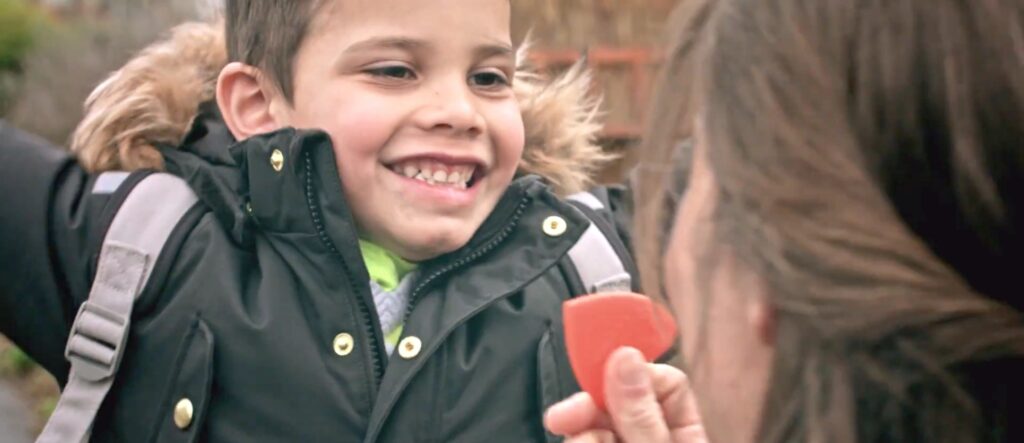
Porges, S. W. (2011). The polyvagal theory: Neurophysiological foundations of emotions, attachment, communication, and self- regulation. New York, NY: W. W. Nortion and Company. Rothbart, M. K. & Rueda, M. R. (2005). The developmentof effortful control. In U. Mayr, E. Awh, & S. Keele (Eds.), Developing individuality in the human brain: A tribute to Michael […]

La regulación de las emociones
• Sofía, quien tiene dieciséis meses está en la oficina del doctor para que le hagan un chequeo y tiene miedo de recibir una inyección. Ester, su mamá, quiere ayudarle a bajar su nivel de ansiedad.

El desarrollo de la habilidad de su hijo de autorregularse requiere que usted la observe cuidadosamente y que responda adecuadamente. A partir del nacimiento, usted ayuda a su hijo a regular sus estados fluctuantes de agitación. A este modelo sencillo de autorregulación lo llamamos Subir y Bajar la energía.

Your interactions with your child play an important role in her future capacity to self-regulate. Whenever you calm your own anxiety, control your anger, manage powerful emotions, or delay gratification, you are regulating your internal states. Modeling how you regulate your own emotions or behavior in various situations helps your child learn to do the […]

Probablemente usted se ha dado cuenta que algunos niños son sensibles a cualquier ruido, mientras otros requieren un ruido muy fuerte antes de responder. Algunos niños pueden hacer mandados
con usted todo el día y no ponerse de mal humor, mientras otros se ponen quisquillosos y necesitan tiempo de reflexión después de una breve excursión.

The Dial Up and Dial Down Model “The better I self-regulate as a parent, the better my child will self-regulate. The better my child self-regulates, the less stress I feel.” – DR. STUART SHANKER

Allard, L. T. & Hunter, A. (2010). Understanding temperament in infants and toddlers. Retrieved from http://csefel.vanderbilt.edu/resources/wwb/wwb23.html Brazelton, T. B. (1983). Infants and mothers: Differences in development (revised edition). New York, NY: Dell. Center for Early Childhood Mental Health Consultation. (n.d.). Infant toddler temperament tool (IT3). Retrieved from http://www.ecmhc.org/temperament/ Levine, M. (2006). The price of privilege: […]

Adam, quien tiene 2 años, se siente tímido y cauteloso en las fiestas de cumpleaños. Joan, la mamá de Adam, hace todo lo posible por hacer que Adam se sienta cómodo, pero se frustra cuando Adam se aferra a
ella en las fiestas. Adam es un niño callado, pero este comportamiento es extremo.

Una vez que usted entienda el temperamento de su hijo, formule estrategias que respeten tanto el temperamento de su hijo como su necesidad de adaptarse al ambiente de su alrededor.
• Ayúdele a su hijo a expresar sus sentimientos, deseos y preferencias.

Piense en usted mismo y en su propio temperamento. El entender su propio temperamento le ayudará a identificar cómo ajustar el temperamento de usted con el de su hijo. Tal vez usted es madrugador, mientras su hijo es noctámbulo. Tal vez usted, una persona introvertida dio a luz a una persona muy sociable. ¿Le sorprende lo diferente que son usted y su hijo?



